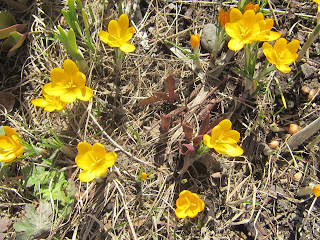Anyone, if they want to, can garden. Appropriate design, that is design that understands and incorporates the wants and needs of the individual, is the key. Gardening is the act or, as I prefer the art, of growing plants. While not all gardens are works of art, the designer, using basic design principles, incorporates the seven design elements (line, shape, form, space, texture, value and colour) when creating a garden.
What plants the gardener grows is a personal choice and the variety of possibilities is vast. The most successful gardens embrace diversity and employ a wide palette when laying out a garden.
All too often, people when they think about a garden, visualize flowers and-or vegetables planted directly into the ground in neat and straight rows.
There is nothing wrong with this image and many successful gardens adopt this design.
However, it is only one of a number of ways plants can be grown.
This article begins an ongoing series that will look at how to create accessible gardens. Future articles will explore specific design considerations, garden tools specifically adapted to enable people to enjoy all gardening has to offer.
Gardens generally consist of two components, hardscape and softscape.
Softscape is the living plants the gardener grows, vegetables, herbs, tress and so on.
Hardscape is the non-living elements, benches, ornaments, lights, paths and so on. Today and next week we will focus on hardscape. For the home garden, a pathway enables people with varying mobility concerns, to experience the garden, directly.
The minimum width of an unobstructed pathway should be 0.90 m. The minimum width of a two-way wheelchair traffic passage is 1.50 m. The preferable width is 1.80 m. In the home garden, it may not be necessary to build a path that caters to two-way traffic.
The slope of an accessible path should not exceed 1:20. Pathways with a slope of more than 1:20 should be designed as ramps. A ramp may be needed if the property is sloped.
What materials must be used when creating an accessible pathway?
First the surface of the pathway needs to be well constructed and must provide firm, non-slip, level access.
Do not use loose materials, such as gravel. Asphalt is a low cost and low maintenance material that provides durability. Weed maintenance may be necessary as over the years asphalt may crack. Asphalt, by itself, is not attractive, however, it can be surfaced with other materials to increase its visual appeal.
Asphalt paths may also act as a heat sink which can play both a positive and negative role in a garden.
Tarmac is another option. Tarmac refers to a technique or approach to paving that involves crushed rock or gravel held together with heated tar.
There are other alternatives to asphalt and tarmac and I suggest taking time and reviewing the overall garden plan and the site itself before deciding on any material.















